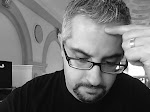
In this case study I hoped to gain some insight into the "quality of space" that Turrell creates with his work, specifically his use and control of light. I am intrigued by his work and the depth with which he manipulates both found and original constructs to achieve his "space".
Turrell's work reframes what you see. Often requiring the adjustment of the visual senses through certain approaches and positioning. Sometimes waiting for eyes to adjust to a certain spectrum. Since his work is meant to be experienced within the space or art he creates, I found it much more productive to do simple diagrams rather than attempt to dissect the precision required to create his space and light.
Thesis development focus is on the performance of space where program and function start to become secondary or even tertiary in nature... quality of space that is desired.
Original notes for reference:




4 comments:
The other nice thing that Turrell achieves is an optical illusion with some of the spaces he creates. Some of the spaces appear to be very deep (ICA installation) when in reality they are quite shallow. You might look into some of his drawings and sketches, the ones that I have seen are quite technical in the way he traces the light and its movement in space (then again, we might understand more after our lighting class...)
The lighting effects that Turrell achieves is very nice, vibrant colors that bleed into softer tones the further from the source refering to the quality of space. Are you planning on similar methods to help with design/programming?
Oh yeah, not sure if this helps but: http://www.archimagazine.com/abienna16.jpg
Its a link to Tadao Andos proposal for a penthouse in NYC - breaking the envelope....
Thanks for the link Joe... very interesting, definitely breaks out of the box.
Turrell's work is very difficult to diagram architecturally. A definite challenge. For me, the notes achieve some base of understanding. I have not seen his technical drawings. His work is meant to be experienced first hand, which in some instances is not possible.
The ICA installation was very cool and I keep that experience in my mind when looking at his work overall. I think I can imagine the other installations when reading about them based upon seeing the ICA installation.
Taking a page from Carli's blog and posting Denise's comments to share here...
2.13.08 Do you think your board effectively conveys your interpretation of Turrell: esp reframing? Turrell is hard to do as architectural case study because so much of his work depends on the sensorial capabilty of the body and movement of body within the space.
Your focus on body and the aspect of wellness makes me wonder if you are influenced by phenomenology....
2.13.08 Rick, I was looking at the LTL book and I saw this (http://www.ltlwork.net/pages/portfolio/workinprogress/arthouse.html). The images on the website are not very thorough. See if you can take a look at their book "Opportunistic Architecture." I was particularly intrigued by the development of the perforations in the exterior facade. The holes are made in relation to program. In the book there are models which analyze an even distribution perforations vs "performative aggregation"(page 22) . They also developed slit punctures in the roof deck. And on Page 15, there is a beautiful drawing of their "tactical adjustments" to the existing box....
And further, see MSK Lobby Wall, page 89, how they got to this (http://www.ltlwork.net/pages/portfolio/workinprogress/msk.html). There are all of these "view cones" intersecting with the wall. Again the intensity of cones and resultant perforations is related to program.
Post a Comment